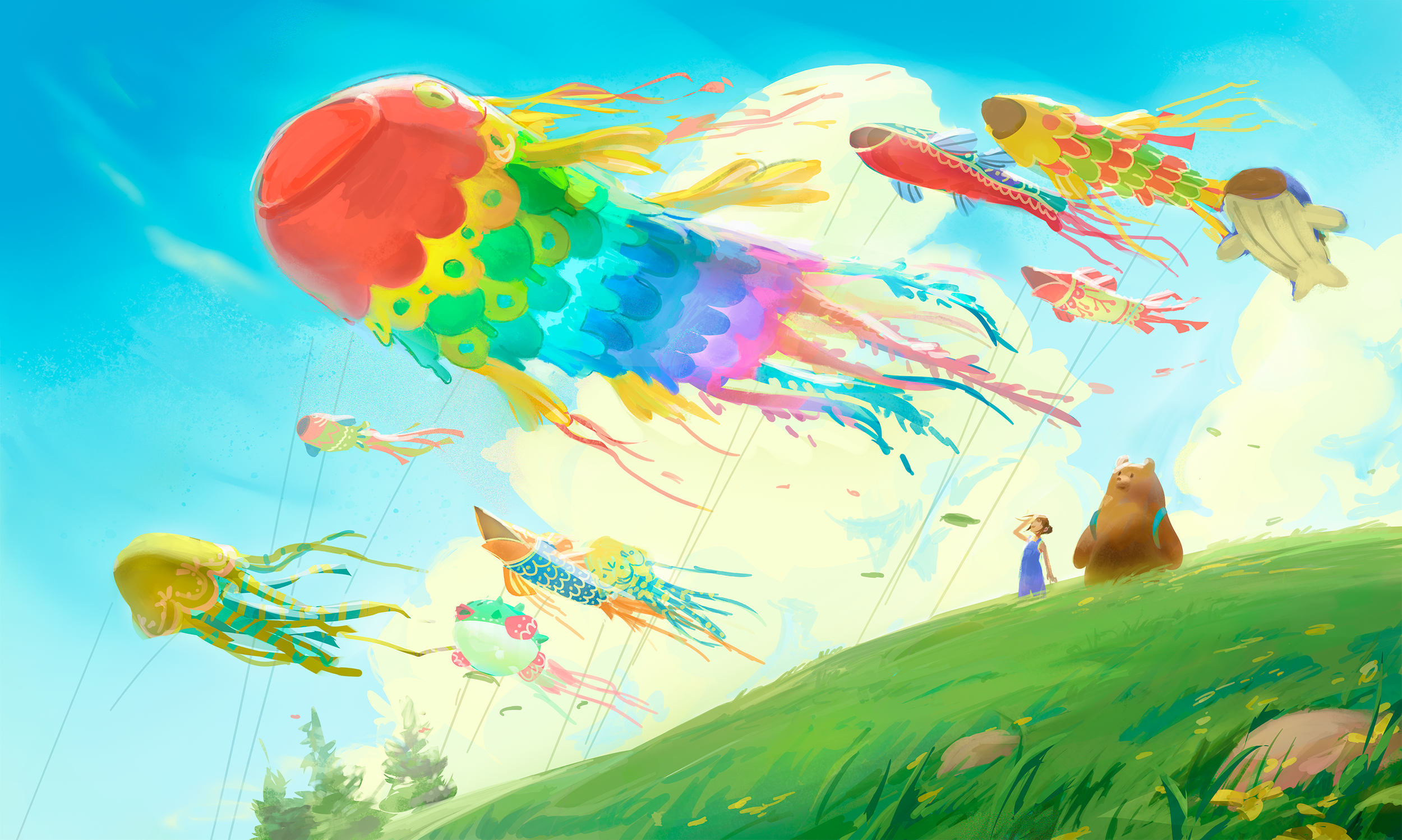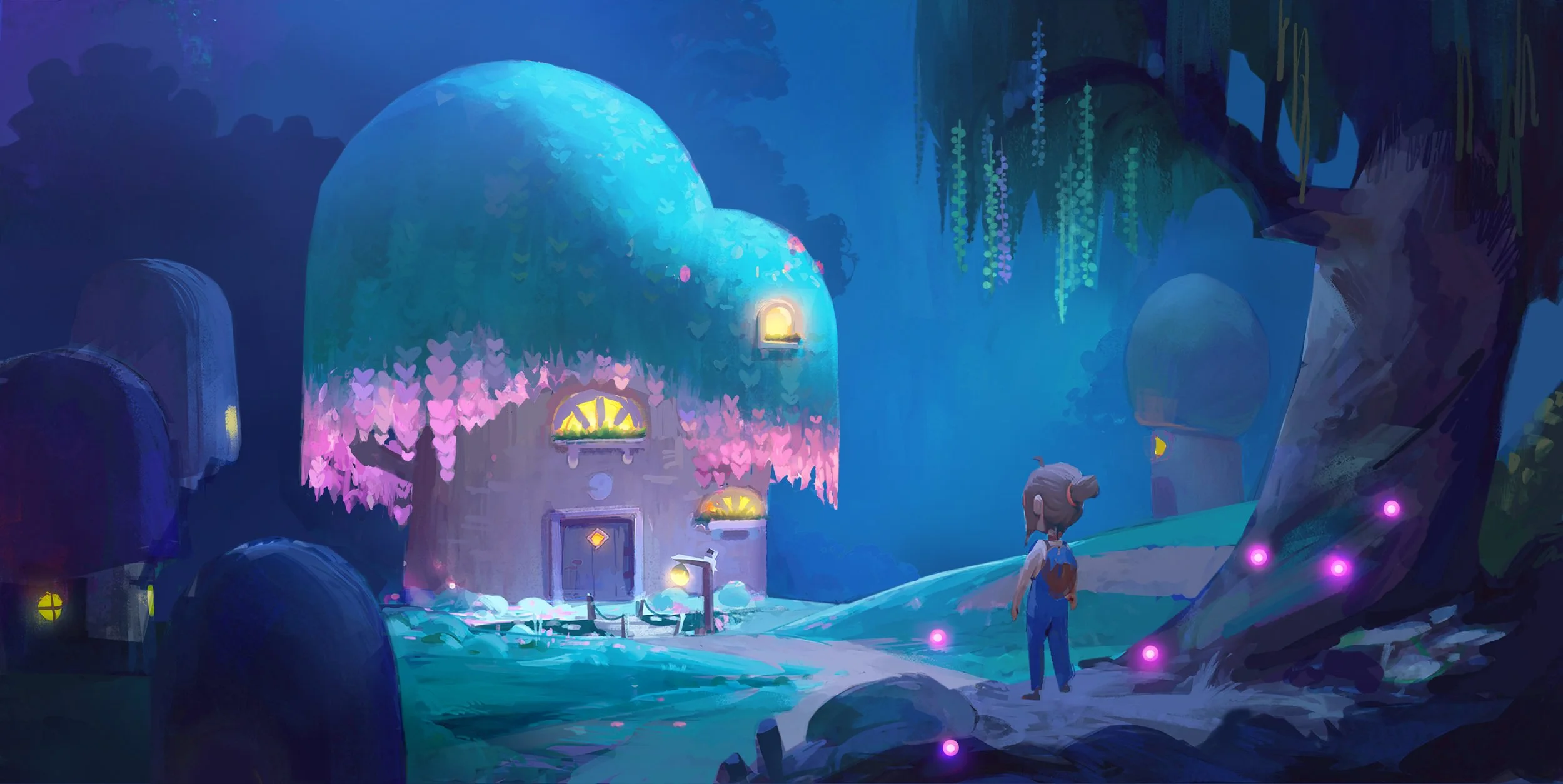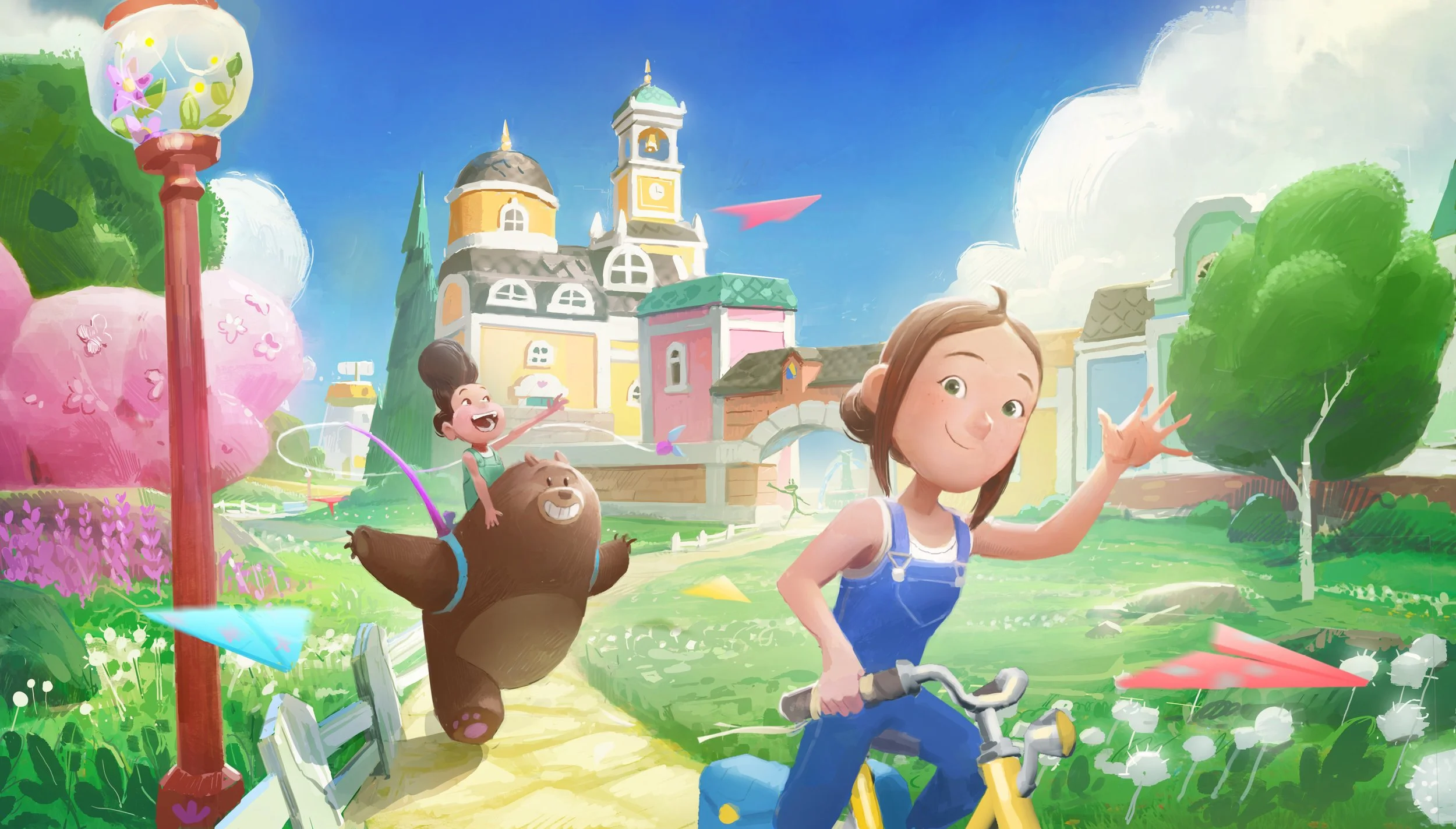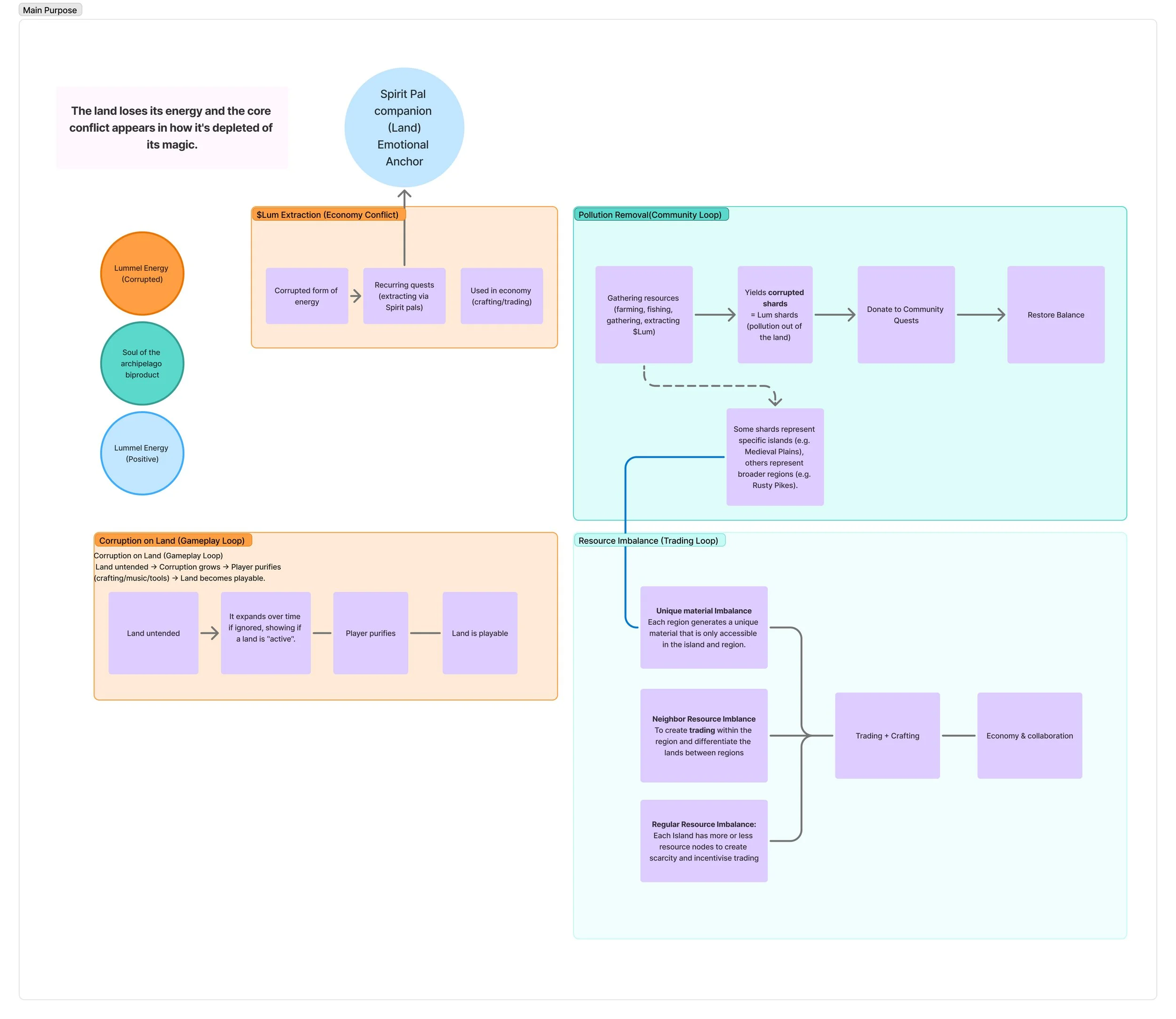
My Neighbor Alice
My Neighbor Alice is a blockchain-based multiplayer farming game inspired by Animal Crossing. Set in a colorful world of islands and whimsical characters, it combines cozy, casual gameplay with community ownership through Web3 features like NFTs and a DAO. Beyond farming and building, the game emphasizes kindness, inclusivity, and collaboration, making it a space where players feel both creative freedom and a true sense of belonging.
Project Overview
Role: Lead Narrative Designer (previously Creative Producer on the project)
Years: 2022-2025
Genre: Social Multiplayer Builder Game on Web3
Focus: Worldbuilding, narrative systems, branded collaborations, community engagement.
Defined the narrative vision: Worldbuilding, lore, characters, tone.
Built narrative systems that connected gameplay, economy, and governance (DAO).
Led the Narrative team, mentoring writers, and aligning cross-disciplinary teams (art, design, dev, marketing).
Developed brand integrations (ELLE, Pudgy Penguins, Persona) through narrative-driven quests and activations.
Supported community engagement through participating in online events (Alice & Chill) and IRL events (PBW, EthCC Brussels).
Designed incentive and reward systems to encourage positive player behavior and participation.
Designed six unique islands, each with culture, history, and NPC ecosystems.
Developed lore codex and narrative “bible” for consistent storytelling.
Defined the emotional tone (kindness, inclusivity, belonging).
Challenges
Create a narrative foundation for a Web3 game that combined cozy, Animal Crossing-style aesthetics with blockchain mechanics.
Build a world and characters that felt warm and inclusive.
Ensure narrative could scale across quests, tokenomics, and community governance (DAO).
Integrate brand partnerships (Pudgy Penguins, Persona, ELLE) into the world story in a seamless way.

Main Purpose
One of the core challenges of My Neighbor Alice was to unify narrative, gameplay, and economy into a coherent experience.
I led the creation of the Main Purpose, a system designed to give players a clear long-term goal while reinforcing the game’s central theme:
“Preserve what remains. Adapt to what comes. Collaborate to bring balance.”
My Role
Translated high-level creative direction into a narrative framework that aligned with design, economy, and live-ops requirements.
Defined the lore foundation of the archipelago’s decay and protector spirits, ensuring it connected to tokenomics, trading loops, and retention mechanics.
Collaborated with designers, developers, and artists to prototype how the “corruption” mechanic would manifest in visuals, economy, and player progression.
Created documentation and storytelling arcs to keep the feature consistent across design, art, sound, and marketing.
Impact
Unified gameplay loops, economy design, and story into a single framework.
Gave a clear, motivating purpose for players: adapt, collaborate, and preserve.
Created a narrative that was resilient to expansion, serving as the backbone for live content and community events.
Recurring Quests - Retention Feature
Problem
Retention is one of the biggest challenges in an economy-driven MMO and a common game problem. Players need reasons to return daily and keep engaging with the trading, crafting, and activity loops.
Solution
We designed Recurring Quests: small daily tasks tied to characters who live in the player’s world. These quests give steady rewards, reinforce the game loop, and add personality to the world.
Process & My Role
Design Collaboration: Worked with design and dev on the type of quests and the representation in the world.
Narrative Framing: Created Oli, a permanent NPC living on player land, who gives tasks every day.
Dialogue Writing: Each quest was tied to Oli’s personality: a crazy engineer in constant need of resources.
Iteration: Explored a long-term solution tied to lore (Spirit Pals as land companions).
Design Choices
Accessibility: Quests designed to be simple and achievable alongside core activities (farming, fishing, crafting).
Lore Integration: Daily tasks were justified through narrative (“helping your land thrive”) so they felt meaningful.
Progression: Rewards connected to existing systems (currency, crafting resources) to ensure utility.
Outcome
Increased daily engagement by giving players a light, consistent reason to log in.
Built attachment to the world through recurring characters.
Created a scalable foundation for future companion-based retention systems.
Tokenomics
Problem
In Web3 games, tokenomics are often overwhelming or purely financial. For My Neighbor Alice, the challenge was to:
Explain tokenomics to players in an accessible, non-technical way.
Integrate tokens into the core narrative and gameplay loops, so they weren’t “just currency.”
Ensure the economy was both sustainable and engaging while aligned with the world’s lore.
Solution
We designed a system where the $ALICE token and in-game currencies were grounded in the story of Lummelunda. Tokens became part of the world’s ecology and world story, not just a transaction layer.
Narrative framing: Corrupted Lummel energy = valuable but polluting, it’s a metaphor for token extraction.
Economy design: Built upon the resource imbalance system: each island specialises in a unique resource, encouraging scarcity, trade and collaboration among players.
Gameplay loop: Token use tied to crafting, land ownership, and progression, ensuring it felt meaningful.
My Role & Process
System Mapping: Collaborated with economy designers to understand supply, scarcity, and inflation risks.
Narrative Design: Created lore that justified token value.
Cross-Team Collaboration: Worked with product, economy, and dev teams to balance narrative depth with economy constraints.
Design Choices
Scarcity justified through story: Resources tied to protector spirits, each island producing unique resources.
Positive/negative value framing: Resource nodes are scarce, but with collaboration, the resources are being exchanged.
Solar Punk ethos: Energy could be renewable but depended on collaboration: “Only together can this world survive.”
Accessibility: Avoided jargon, the trading is explained as part of the world’s natural order.
Outcome
Translated complex tokenomics into approachable player-facing systems.
Strengthened immersion: players felt their economic actions had ecological and social consequences.
Connected economy to narrative loops: resource trading, spirit upkeep, and collaboration became part of the story.

